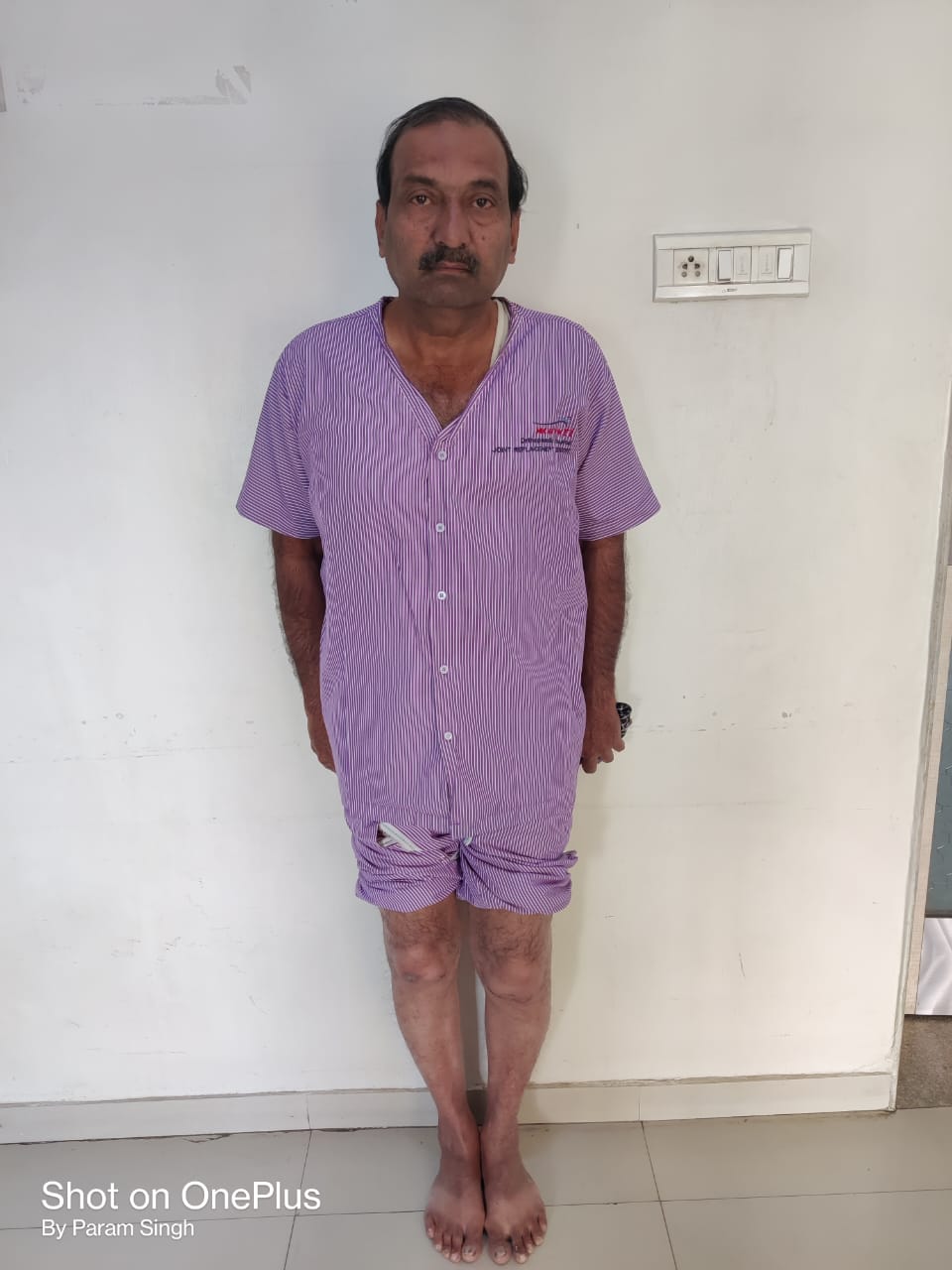
What is Knee Replacement Surgery?
The knee is the joint that joins the thigh bone to the leg bone in the human body. Articular cartilage, a layer of cushion that lines the joint surfaces of bones, ensures mobility with the least amount of friction. In addition, meniscus serve as a shock absorber and aid in knee motion.
- Expertise
- Personalized Care
- Advanced Technology
- Rehabilitation Support
- Minimally Invasive Options
- Quality Implants
- Experienced Team
- Patient Education
- Holistic Approach
- Positive Outcomes
Why Knee Replacement?
In the later stages of a knee ailment, a knee replacement becomes necessary. Although there are several medical causes of knee discomfort, osteoarthritis is the most prevalent ailment that necessitates a knee replacement. This problem arises when the knee joints’ cushioning cartilage wears away and the bones start to rub against one another. As a result, the knee’s other portions are damaged and experience pain, swelling, and stiffness.
Osteoarthritis has no known cure. However, it can be controlled in the early stages with exercise, weight loss, medication, and injections. Surgery is the greatest solution when it produces severe discomfort over an extended length of time. Partial or total knee replacements are carried out depending on the severity of the condition. If the illness is only present in the inner half of the joint, partial knee replacement may be the answer. However, total knee replacement is the only option if osteoarthritis spreads to all compartments of the knee. The Maruti Orthopaedic Hospital’s Knee Replacement Unit provides the most thorough therapy for a wide range of knee-related musculoskeletal disorders. Dr. Viral Patel evaluates all varieties of knee issues and treats chronic knee pain while making sure that every patient receives complete therapy to address the most typical to the rarest difficulties. In Ahmedabad, Gujarat, we also provide ACL knee ligament surgery at a very competitive price.


Who might need a knee replacement?
Knee surgery may be suitable for patients who experience:
- severe knee discomfort or stiffness that makes it difficult for them to perform daily activities like walking, climbing stairs, getting in and out of cars, or getting up from a chair.
- Knee discomfort that is moderate and ongoing, even when sleeping or relaxing
- Chronic knee edoema and inflammation that do not subside with medicine or rest
- An obvious arch on the inside or outside of the knee is a knee malformation.
Types of knee replacement surgery
Knee replacement can be total or partial.
Total knee replacement (TKR): This surgical procedure involves replacing the knee joint on both sides. The most typical procedure is this one.
One to three hours are spent during surgery. Although there will be less discomfort and better mobility, the person may find it challenging to flex and bend their knees due to the scar tissue.
Partial knee replacement (PKR): One side of the knee joint is replaced using a partial knee replacement (PKR). The incision is smaller since less bone is taken, but it does not last as long as a complete replacement.People who simply have knee injury in one area can benefit from PKR. Recovery after surgery is simpler, there is less blood loss, and the danger of infection and blood clots is reduced.There is a greater likelihood of more natural movement and the hospital stay and recuperation time are typically shorter.
What is the latest process for Knee Replacement?
Utilizing cutting-edge techniques like minimally invasive surgery or computer-assisted navigation for orthopaedic surgery, as well as the Best Knee Replacement Surgeon Ahmedabad, Maruti Orthopedic Hospital treats a variety of knee ailments with a patient-centered, multidisciplinary approach. Consequently, we can give our patients better results and, in some situations, quicker recovery times.
Our team is committed to offering each patient excellent care and cutting-edge knee treatment. One of Gujarat’s top surgeons for ligamentous knee surgery is Dr. Viral Patel. He is a skilled doctor who specialises in knee joint replacement surgery.
Preparing for Surgery
Since knee arthroplasty requires major surgery, pre-operative planning, doctor visits, and physical examinations typically start a month before the scheduled surgery date.
Checking the blood count, observing how the blood clots, performing electrocardiograms (ECGs), and performing urine tests are examples of preparatory and diagnostic tests.
Typically, a general, spinal, or epidural anaesthesia is used during surgery.
The damaged cartilage and bone will be removed during the treatment, and a new implant consisting of metal, plastic, or both will be placed to correct the knee’s alignment and functionality.
How long does it take to recover from a knee replacement?
Six weeks after having a knee replacement surgery, you should be ready to stop utilising your supports or walking edge and start doing your regular recovery activities again. In any event, the reduction of pain and swelling could take up to 3 months. You should be able to get your knee fully straightened and expanded within 7 to 10 days of your knee replacement surgery. Any leg expansion can persist for up to a year before it finally goes away.
FAQ (Frequently Asked Questions)
The recovery period varies, but most patients can resume normal activities within 6 weeks, with full recovery taking a few m
Like any surgery, knee replacement has risks, including infection and blood clots. However, these risks are minimized with proper pre-operative evaluation and post-operative care.
There are various knee implant designs, including fixed-bearing implants and mobile-bearing implants. Your surgeon will choose the type that best suits your condition.
Yes, physical therapy is crucial for rehabilitation. It helps improve strength, flexibility, and range of motion, ensuring a successful recovery.
Patients should maintain a healthy weight, engage in regular low-impact exercises, and follow a joint-friendly diet to ensure long-term success and reduce the risk of future issues.
